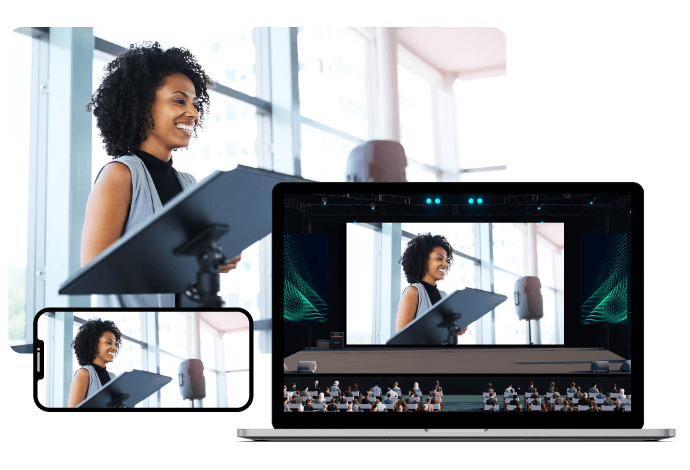Incorporate These On-Site and Online Event Aspects for a Seamless Hybrid Event

Long gone are the days when one would travel and cross oceans to attend that conference being organized in some other corner of the world. The 2020 year changed it all. But, now, two years later, another format has become prominent: Hybrid events. We can say that hybrid events are a thing of 2022. Seeing the positive response of organizers and attendees across the world, one can say that the sun of hybrid events is going to shine bright.
Let us have a look at the different aspects that combine together to form a seamless hybrid event. But before that, let us understand what hybrid events are.
One can understand hybrid events as the combination of virtual events and physical events. Hybrid events have become extremely popular in recent times, as they come with great flexibility. They allow the attendees to join the event at their convenience. If the audience wants to attend the event physically, they can attend the event that way. However, if they don’t want to travel, hybrid events give them the opportunity to connect virtually also.
Hybrid events are organized over hybrid event solutions. Hybrid event platforms bring the best of both worlds together. There are several hybrid event platforms available in the market. However, an ideal hybrid event solution comes with several audience engagements and integration opportunities.
Hybrid events combine the strengths of virtual events and physical events together to deliver magnificent results. Below given are the online and offline aspects that you can incorporate into your event strategy to deliver unforgettable hybrid event experiences.
Expand the Audience Attendance Rates:
Digitalization has allowed the attendees to expand their audience reach. It is the reason several organizations across the globe have started to host hybrid events on a larger scale. The cherry on the cake, virtual events come without any restrictions on the number of attendees that the organizers can accommodate in their events. There are a few small factors that the organizers overlook. However, these aspects, when combined, come together to create significant changes in the event. For example, consider different time zones when you are planning the event.
One strategy that you can follow is repeating the essential agendas three times during the event. Depending on the time zones, you can record the live sessions in front of the live audience, where you can. Now, as different time zones become available, you can play the recorded session, but the Q&A session would be live. This would save you from presenting your content over and over again, and ensure higher audience reach.
Make Use of Advanced Networking Features:
Data reveals that hybrid events are going to be the first choice of organizers across the world. Also, it is needless to say that networking has always been a key factor in an event. Almost all the attendees look forward to connecting with new people at an event. Hence, you need to make use of the tech advancements, and incorporate matchmaking features into your event planning. These features will help you and your attendees connect with like-minded people, and develop and improve their overall event experiences, be it physical audience or the virtual audience.
Deliver Compelling Content:
One myth organizers have for virtual audiences is they don’t pay attention to the event. But, let us tell you something; there is no guarantee that those who are attending the event physically are. All the attendees, be it physical or virtual, get distracted at one point in time. As an event organizer, you need to address the issue and incorporate effective measures in your event strategy. Develop a strategy that will help you deliver content to your audience effectively, and that too without making them feel bored. When it comes to a virtual audience, you should focus on keeping the presentations and sessions short and crisp.
The ideal length should be 15-20 minutes; however, if the length exceeds, schedule breaks in between the sessions. If any speaker is further interested, he/she will connect with the speaker after the session. One might find connecting both sets of the audience with the speakers difficult. It is exactly when the technology comes to the rescue; physical attendees can either log in to the hybrid event platform or use the feature of ‘raise hands’. Apart from that, the organizers can ask them to submit their questions beforehand, which the organizers can share with the speaker.
Even though hybrid events come with endless advantages and benefits, one cannot ignore the challenges and limitations they have. One of the most prominent of them is keeping the physical and virtual aspects of the event in sync. However, we believe that the above-mentioned ideas have helped you understand how you can manage them both and create a seamless hybrid experience.


